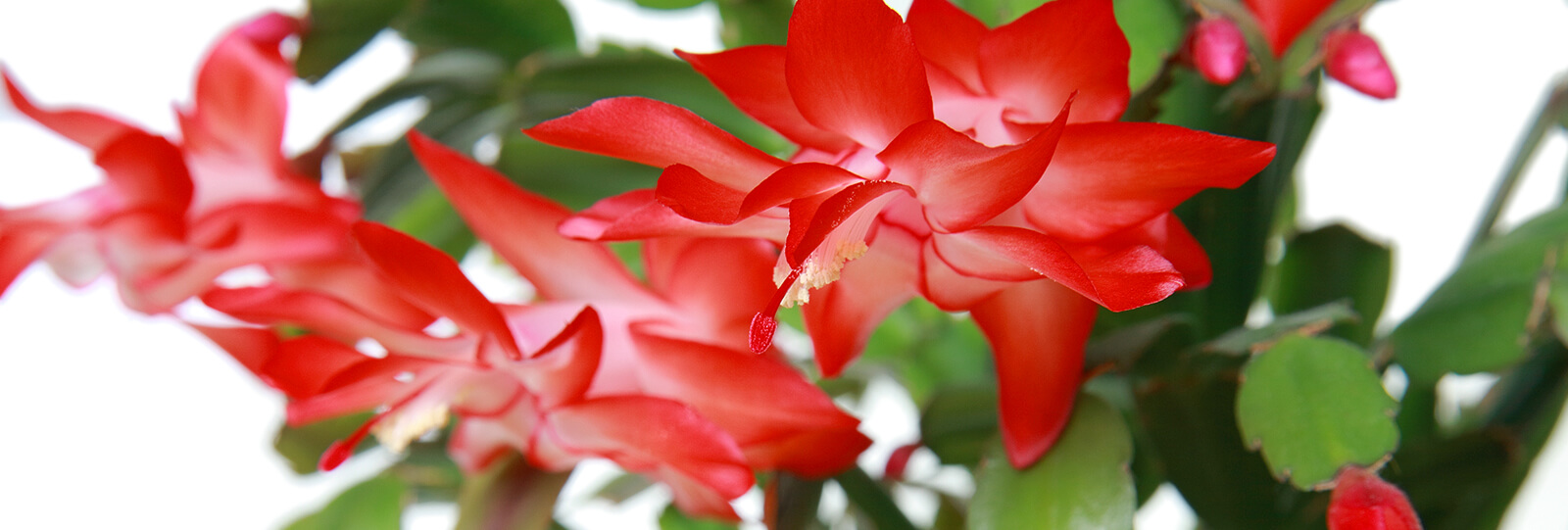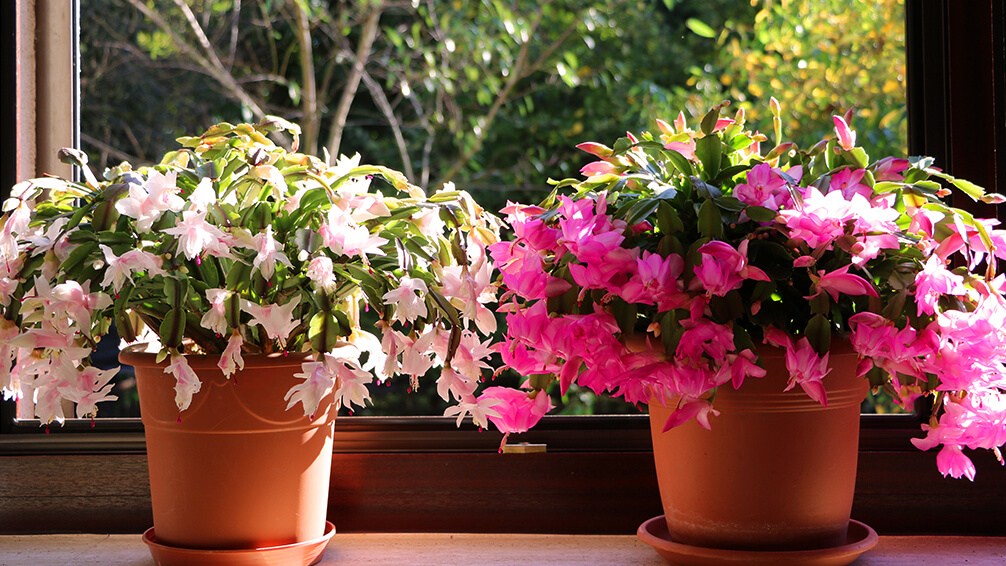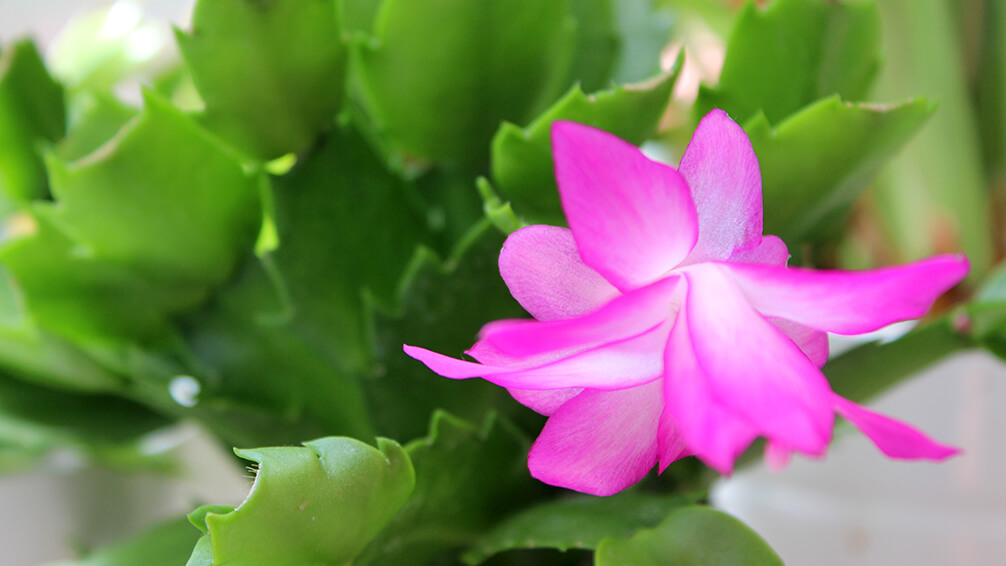
How to Care for Christmas Cactus
While most of the country associates Christmas with snow-capped evergreens and jaunty snowmen, we happen to know that all the coolest holiday plants are actually from the tropics. Poinsettias, for example, grow wild along the highways of Mexico. However, we’re especially fond of the Christmas cactus, a low-light-loving succulent that hails from Brazil’s humid mountain jungles. Somehow, between its discovery in 1815 and today, it’s managed to gain a reputation as a wildly popular holiday gift plant. Here’s why we love it and how to keep yours alive.

Why We Love Christmas Cactus
Christmas cactus, also known as Schlumbergera, is a unique-looking plant with mounds of foliage that grow in an interesting chain-like pattern. While the plant will blend in with your other green foliage plants for most of the year, Christmas cactus owners all look forward to the holiday season, when the plant bursts into a spectacular blooming period.
The Christmas cactus’ blooms are usually a vibrant shade of red, pink, or purple, which makes for a pretty opulent holiday decor scheme. Christmas cacti bloom for several weeks at a time, so they make fabulous, colorful gifts for friends and family during the giving season. Better yet, a well-cared-for Christmas cactus can live for decades. In fact, we’ve heard tell of folks who have inherited Christmas cactuses that have been in the family longer than their parents have been alive!
Caring for Christmas Cacti
Light Needs
Unlike other popular succulents, like echeveria, Christmas cacti aren’t big on direct sunlight. The Christmas cactus’ light needs are similar to other tropical forest-dwelling plants that evolved under a thick canopy of trees. They prefer indirect sunlight, so keep yours out of hot sunbeams. An east or north-facing windowsill suits them, or a spot near (but not in front of) a south or east-facing window works as well.

Water Needs
Christmas cacti are cacti in name only. In other words, this is not a plant that can go weeks and weeks without water. Their native environment is the ultra-humid jungle, where their soil rarely dries out, and they looove humidity. (Good news for us Houstonians!) While you won’t need to try too hard to keep the air humid enough for your Christmas cactus, you will want to be pretty on-top of checking their soil moisture. A soil moisture meter can make this job pretty easy for you, or you can check it daily with your finger. If the top of the soil is dry, it’s time to break out the watering can.
Soil & Fertilizer
These plants are used to sharing space with the myriad other plants in the jungle, so they thrive in cramped spaces. Your Christmas cactus is more than comfortable being a little root-bound as long as it’s accompanied by well-draining sandy soil. Kind of like how you don’t mind being squeezed between your distant cousin’s son and great-aunt at Christmas dinner as long as there’s some rum handy to drain into your eggnog.
Christmas cacti aren’t very picky with their feeding (unlike your distant cousin’s son), but they do appreciate the occasional dose of balanced liquid fertilizer. An application of 20-20-20 plant food in spring, summer, and early fall should be all it needs for its best performance.

Blooming Tips
Technically, your Christmas cactus could bloom at any time in the winter, so if you’re aiming for Christmas flowers, you may need to adjust the conditions for your cactus to time it right.
- For holiday blooms, start cutting back on water around now (in early to mid-November) and let it dry out a little more between waterings. Water when the top inch has dried out.
- Keep it in a location that gets very little artificial light during the evenings. Evening darkness is very important for the plant to set bud; it needs about 12 hours of pitch black per night.
- Ideally, this location should also get a few degrees cooler at night. With this in mind, make sure the plant isn’t too close to a heat vent and also isn’t too close to a drafty door or window.
If you haven’t yet received (or inherited) a Christmas cactus yet, visit us at Plants for All Seasons! You can browse the many specimens available in-store or arrange curbside pickup for your new favorite family heirloom.

